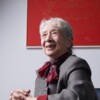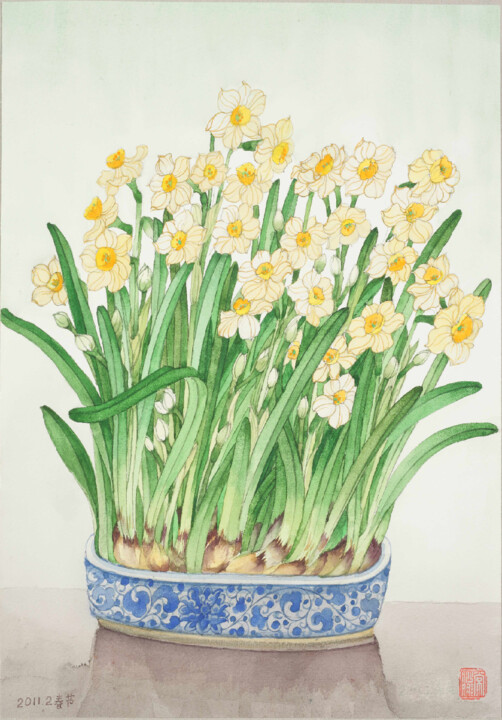
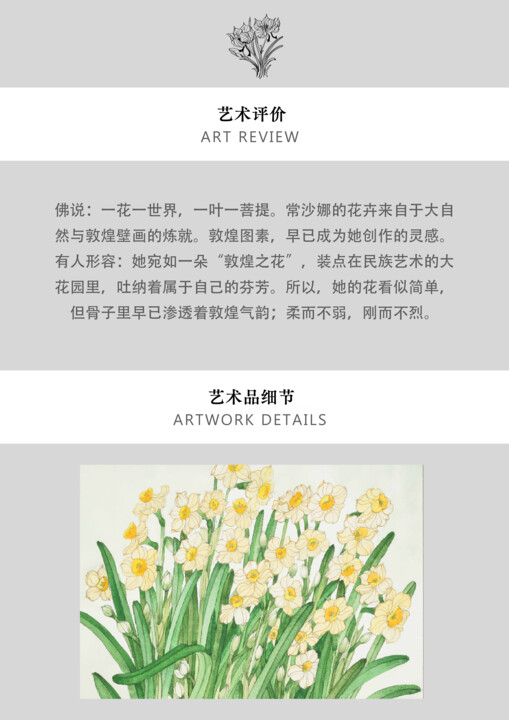
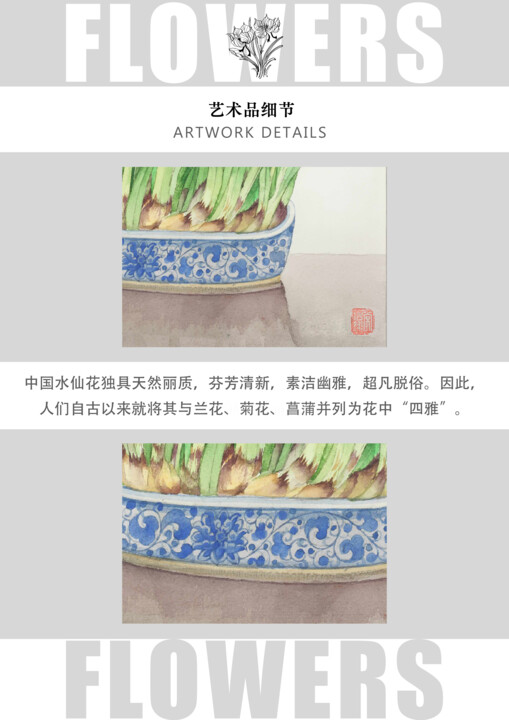
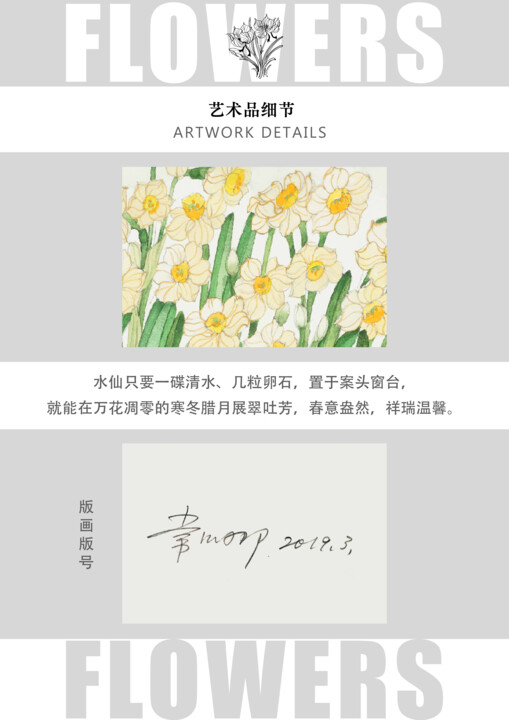
水仙 (2011) Printmaking by Sha Nuo Chang
Not For Sale
-
Limited Edition (#100/100)
Printmaking,
Xylography
/
Engraving
on Paper
- Dimensions Height 29.9in, Width 22.2in
- Artwork's condition The artwork is in perfect condition
- Framing This artwork is not framed
- Categories Oriental Art Flower
Related themes
She returned to China with her parents at an early age. At the age of 12, under the guidance of her father, Chang Shuhong, a famous painter and the first director of the Dunhuang Research Institute, who was known as the "Guardian of Dunhuang", she began to study the art of Dunhuang murals in Mogao Grottoes, showing her excellent artistic talent. In 1948, she went to the School of Fine Arts of the Boston Museum of Fine Arts to study. In 1950, under the guidance of Mr. Lin Huiyin, Mr. Chang Shana boldly applied Dunhuang patterns to the arts and crafts design required for modern life. From then on, she embarked on the road of art design and became one of the earliest scholars in China to engage in the research and teaching of Dunhuang patterns. She was honored as the "Dunhuang Pattern Decipherer".
Mr. Chang Shana actively explored the use and innovation of traditional patterns. Since the 1950s, she has participated in many national decoration design projects, including the Banquet Hall of the Great Hall of the People, the National Culture Palace, the Soviet Exhibition Hall (now the Beijing Exhibition Hall), the Capital Theater, and the facade of the Exhibition Hall of the History of the Communist Party of China, which are among the "Ten Major Buildings" of New China. In 1997, she presided over and participated in the design of the "Forever Blooming Bauhinia" sculpture, a monument presented by the People's Government of the People's Republic of China to the Hong Kong Special Administrative Region Government.
For many years, Mr. Chang Shana has devoted himself to the study of Dunhuang patterns, and systematically copied, sorted, studied and taught the decorative patterns of Dunhuang murals and colored sculptures. He has successively published "Decorative Patterns of Chinese Dunhuang Throughout the Ages", "Decorative Patterns of Chinese Dunhuang Throughout the Ages - Continuation", "Dunhuang Clothing Patterns Throughout the Ages", "Chang Shana's Collection of Essays", "Flower Collection", "Yellow Sand and Blue Sky", etc.
In the process of combining design with practice, Mr. Chang Shana kept in mind the principle of artistic creation that Premier Zhou, Liang Sicheng, Lin Huiyin and other gentlemen regarded as the purpose and constantly elaborated in the 1950s - "national, scientific, and popular", which refers to the context, a national thing in the blood.
She inherited her father's mission to Dunhuang, and tried her best to promote Dunhuang art throughout her life and bring the beauty of Dunhuang to the world.
-
Nationality:
CHINA

- Date of birth : unknown date
- Artistic domains: Represented by a Gallery,
- Groups: Chinese Contemporary Artists Artists presented by a gallery









